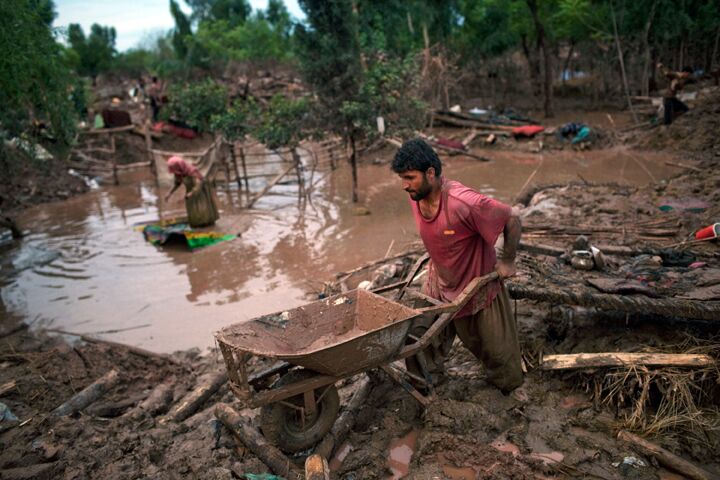
Terrorists Exploit Pakistan Floods
In addition to causing a huge loss of lives, homes and infrastructure, and causing devastation that will take years to repair, Pakistan’s floods are helping the Taliban make a comeback.
The floods have affected 14 million people—more than the 2004 Indian Ocean tsunami, the 2005 Kashmir earthquake and the recent earthquake in Haiti combined—despite the fact that “only” around 1,600 people have died, according to the United Nations.
Before the floods hit, the Pakistani government seemed to finally be making progress in the Swat Valley. The army drove out the Taliban, the government built new bridges and roads, and tourists were just starting to return to the area.
Now, the Swat Valley is one of the worst hit areas. Army officials say that every bridge has been destroyed and that it will take months just to get the electricity back.
The Taliban is taking full advantage of the opportunity, aiming for the hearts and minds of the people.
Islamist groups have been the quickest to respond to the disasters, with a network of volunteers and donations from urban middle-class Pakistanis. The Falah-e-Insaniat Foundation, a charity allegedly linked with the militant and illegal Lashkar-e-Toiba (LeT), has fed tens of thousands of people. The social wings of hard-line Islamist parties have also been helping out.
“Given the circumstances, for it to now act against groups who are seen to be doing a sterling job in terms of helping people will be absolutely suicidal,” said Pakistan expert at London’s Royal Institute of International Affairs, Farzana Shaikh.
The government, meanwhile, is rapidly losing popularity. After the floods hit, President Asif Ali Zardari flew to Europe. Desperately short of helicopters for rescue efforts, Pakistanis saw their president travel to his family’s château in France in a private helicopter. Junior Economic Affairs Minister Hina Rabbani Khar’s convoy was pelted with stones as she arrived in southern Punjab.
In the Pakistanis’ eyes, the militant groups are quick to help out, the army—while stretched thin—gives a little support, and the president cavorts around Europe.
In a survey conducted shortly before the floods hit, only 17 percent of Pakistanis said they had a favorable view of the U.S. Fifty-nine percent said the U.S. was an enemy. Although the Taliban and al Qaeda are also unpopular, there is fertile ground for the militants to work with. Their popularity could soar even after the flood waters have receded.
The floods are to the Taliban’s advantage militarily, also. The guerrilla-style groups thrive in the chaos, where they can attack and run away. The army, meanwhile, needs good roads and communication networks to function properly.
The army is also having to divert many of its resources to fight the floods, meaning they have less to focus on the Taliban. Sixty thousand troops are currently occupied with flood-relief work.
Pakistan is a nuclear state. An event like this that gives more power to the Taliban is dangerous to far more than the nation of Pakistan. If the Islamists can beat the government, then they win the nukes.
For more information on the nuclear danger in Pakistan, see our article “Pakistan and the Shah of Iran.”
